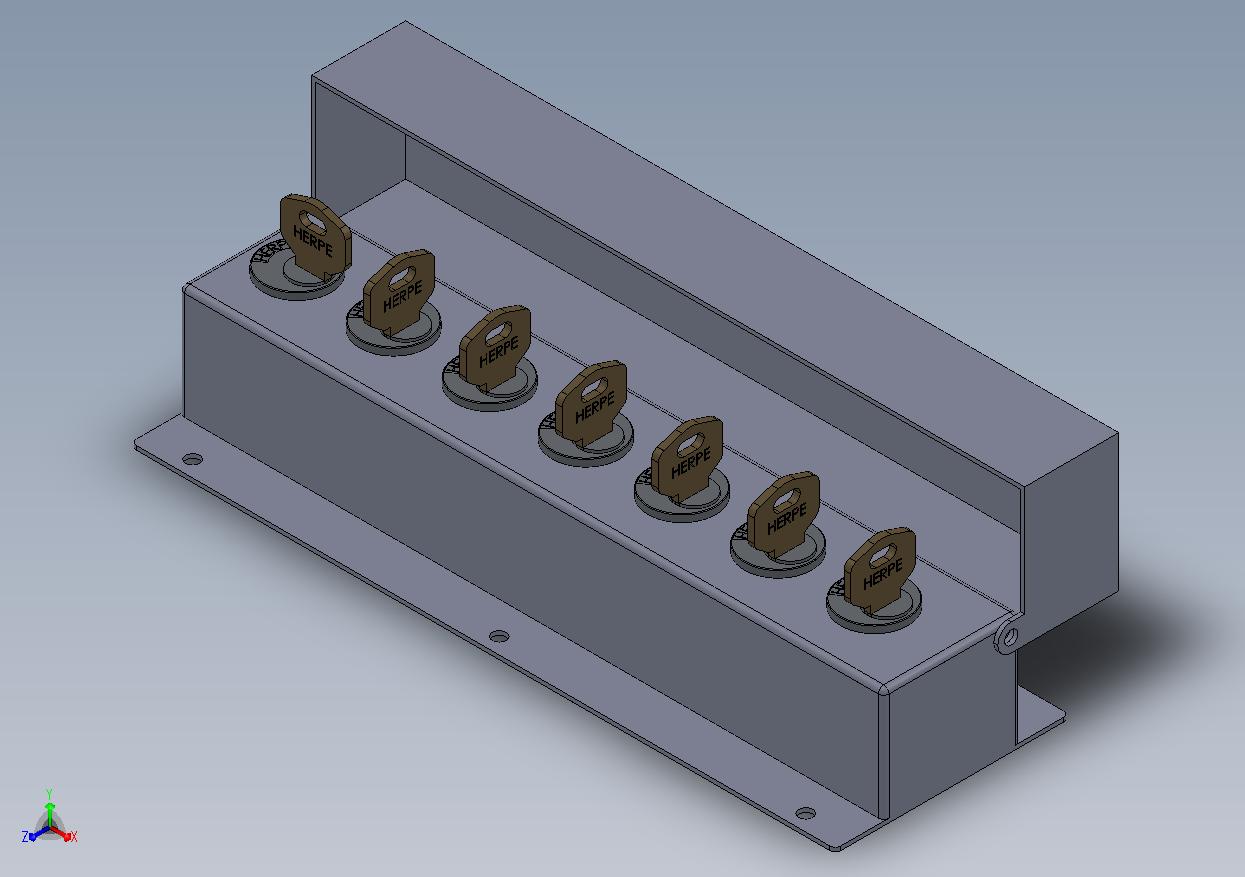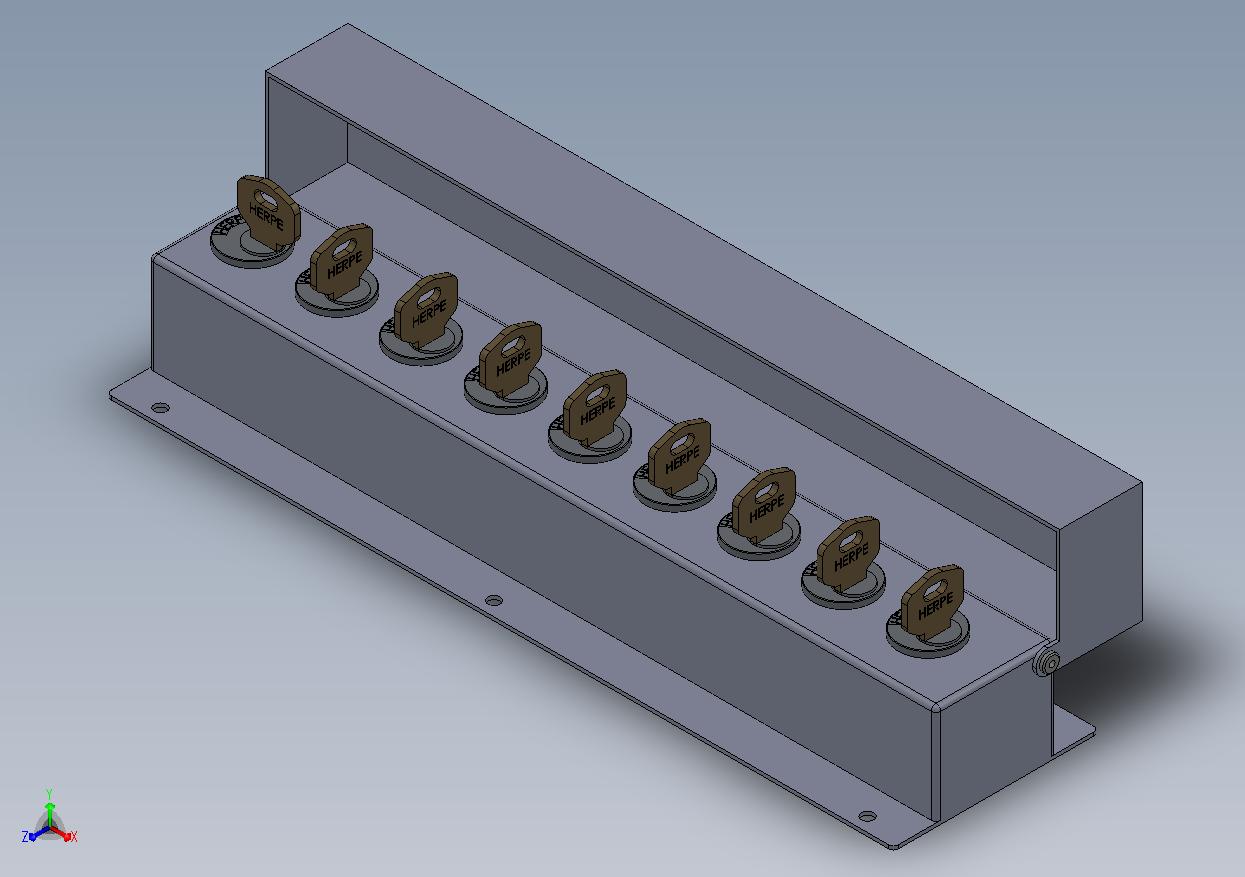Mini Key Selectors with Lid


-
Ref. A303 INTERCAMBIADOR MINI PARA TRES LLAVES, Ref. A303


En ocasiones, la secuencia de enclavamiento a realizar requiere que, como es en este caso, con una sola llave no sea necesario para realizar dicha secuencia. Es aquí donde intervienen los intercambiadores, de forma que de una llave, se consigan otra, para poder realizar el enclavamiento sin ninguna falsa maniobra.
En este caso, ponemos a modo de ejemplo, un intercambiador de llaves, con dos llaves, cuya característica es que cuando una de las llaves del armario queda libre, las otra quedará enclavada en el armario sin posibilidad de ser extraída. Al introducir, la llave libre en su cerradura y girarla, se podrá liberar la otra llave que estaba enclavada, y a su vez, la primera quedará enclavada sin posibilidad de ser extraída
Características
Una llave enclava : a dos llaves | Dos llaves enclavan : a una llave
-
Ref. A304 MINI KEY SELECTOR – FOUR KEYS, Ref. A304


In some occasions, the interlocking sequence requires of more than one key to perform it.
Key selectors allow to get more than one key from just one, so that the interlocking sequence can be performed without errors.As an example, in a key selector with two keys, when one of the cabinet locks is released, the other is trapped and cannot be released. If the free key is inserted and turned, the other one can be released and, consequently, the former is trapped.
Características
One key trapping: three keys | Three keys trapping: one key
-
Ref. A305 MINI KEY SELECTOR – FIVE KEYS, Ref. A305


In some occasions, the interlocking sequence requires of more than one key to perform it.
Key selectors allow to get more than one key from just one, so that the interlocking sequence can be performed without errors.As an example, in a key selector with two keys, when one of the cabinet locks is released, the other is trapped and cannot be released. If the free key is inserted and turned, the other one can be released and, consequently, the former is trapped.
Características
One key trapping: four keys | Four keys trapping: one key
-
Ref. A306 MINI KEY SELECTOR – SIX KEYS, Ref. A306


In some occasions, the interlocking sequence requires of more than one key to perform it.
Key selectors allow to get more than one key from just one, so that the interlocking sequence can be performed without errors.As an example, in a key selector with two keys, when one of the cabinet locks is released, the other is trapped and cannot be released.
If the free key is inserted and turned, the other one can be released and, consequently, the former is trapped.Características
One key trapping: five keys | Five keys trapping: one key
-
Ref. A307 MINI KEY SELECTOR – SEVEN KEY, Ref. A307


In some occasions, the interlocking sequence requires of more than one key to perform it.
Key selectors allow to get more than one key from just one, so that the interlocking sequence can be performed without errors.As an example, in a key selector with two keys, when one of the cabinet locks is released, the other is trapped and cannot be released.
If the free key is inserted and turned, the other one can be released and, consequently, the former is trapped.Características
One key trapping: six keys | Six keys trapping: one key
-
Ref. A308 MINI KEY SELECTOR – EIGHT KEYS, Ref. A308


In some occasions, the interlocking sequence requires of more than one key to perform it. Key selectors allow to get more than one key from just one, so that the interlocking sequence can be performed without errors.
As an example, in a key selector with two keys, when one of the cabinet locks is released, the other is trapped and cannot be released. If the free key is inserted and turned, the other one can be released and, consequently, the former is trapped.
Características
One key trapping : seven keys | Seven keys trapping : one key
-
Ref. A309 INTERCAMBIADOR MINI PARA NUEVE LLAVES, Ref. A309


En ocasiones, la secuencia de enclavamiento a realizar requiere que, como es en este caso, con una sola llave no sea necesario para realizar dicha secuencia. Es aquí donde intervienen los intercambiadores, de forma que de una llave, se consigan otra, para poder realizar el enclavamiento sin ninguna falsa maniobra.
En este caso, ponemos a modo de ejemplo, un intercambiador de llaves, con dos llaves, cuya característica es que cuando una de las llaves del armario queda libre, las otra quedará enclavada en el armario sin posibilidad de ser extraída. Al introducir, la llave libre en su cerradura y girarla, se podrá liberar la otra llave que estaba enclavada, y a su vez, la primera quedará enclavada sin posibilidad de ser extraída.
Características
Una llave enclava : a ocho llaves | Ocho llaves enclavan : a una llave
-
Ref. A310 MINI KEY SELECTOR – TEN KEYS, Ref. A310


In some occasions, the interlocking sequence requires of more than one key to perform it. Key selectors allow to get more than one key from just one, so that the interlocking sequence can be performed without errors.
As an example, in a key selector with two keys, when one of the cabinet locks is released, the other is trapped and cannot be released. If the free key is inserted and turned, the other one can be released and, consequently, the former is trapped.
Características
One key trapping : nine keys | Nine keys trapping : one key


 Ficha Técnica
Ficha Técnica